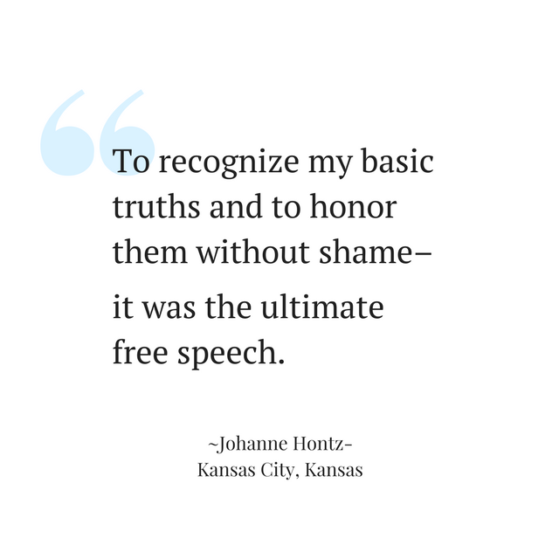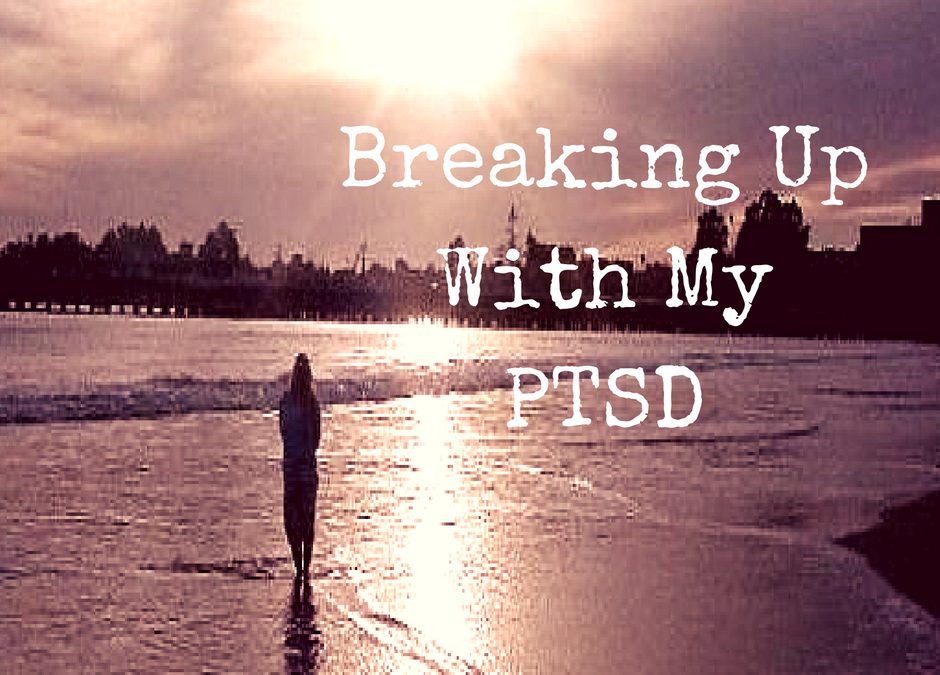My almost life-long companion and I are actually breaking up. I should be more specific. What I’m breaking up with is more exactly known as C-PTSD, a form of PTSD. I think we’re in the final stages of our separation. It’s been a long and drawn-out breakup because that’s how it goes with C-PTSD. Once you get to know it well, you practice breaking up with it every day. Some days require more sorting out and negotiation than others.
It’s been around a long time for me. My children have all become very familiar with it even though they didn’t know what they’re really seeing. Most people outside of our home never even knew it was around.
My kids think it’s “just mom” and had no way to know when it was a bad day for loud, sudden noises or that a game of “Let’s Hide and Scare Mom!” could send me off like a bottle-rocket and put my heartbeat in the red zone — and while my kids would get a laugh and a charge out of it, it wasn’t fun or funny for Mom. They didn’t have any way to understand that.
The people I meet in the business world have never been introduced to this pestering companion of mine. They had no reason to know that my C-PTSD nightmares could sweat me up like a Baptist preacher at a tent revival. I always showed up when I said I would and, even when I didn’t think I could, I would perform like a champ because most of the time I could bite down on the leather and manage my anxiety like a Green Beret. It was exhausting.
My family of origin cannot understand why I feel like a humming 220 live wire around them. They don’t seem to understand how or why I became the black sheep of the family — because they believe, and they are right, it was my own decision to distance myself from them and make life choices they don’t relate to or respect.
So, am I fully rid of this condition that feels like a stalker? I’m not sure anyone ever shakes it completely because it seems to hang around just to remind you about all the times it saved you from being killed or hurt in the most dangerous of times. It works hard to preserve evidence of just how bad it was, just how alone and helpless you felt (and probably were). It goes on trying to prove its worth by showing you the re-runs of the bad scenes — all in the name of trying to figure it out and make sense of what feels like senseless, incomprehensible trauma. It was only trying to keep you alive, after all. How could you want to break up, you know, after all you’ve been through together?
True, it did help me develop super-acute hearing that can detect a thump in the night, or a belt-buckle jangling like no one else I know. It is also true that I could depend on the C-PTSD to shoot me up with life saving adrenalin and pain-numbing endorphins when anyone or anything surprised or felt threatening to me. If I seemed too comfortable in my peaceful life or too collected and in-control of my emotions after facing any level of crisis (or dare I say even sometimes, joy and happiness), I could count on it to show up like a jack-in-the-box with surprise review videos that would play out in the form of flashbacks or nightmares.
It was a reliable resource for so many reminders and tried to act as a protector, but it was nowhere to be found during the nasty but natural stress-chemical hangovers I held myself accountable for.
The thing about PTSD and C-PTSD is that it is on what I call a “carnival spectrum” ranging from the hardcore nightmare of scary clowns in a dark, abandoned carnival to, when you’re getting better, occasional daytime ghost hunting. That’s how I knew when my PTDSD was in the “mostly managed” category. Every person in the trenches with PTSD is trying to recover, and they all need support.
If you didn’t already know, that the “C” in C-PTSD stands for complex, it’s probably nothing you missed. It’s not even considered common knowledge. The PTSD category didn’t hit the diagnostic books until around mid-2013. It wasn’t even until Jimmy Carter was president of the United States (not his idea) in 1980 that mental health professionals had any standard of measure, or even a name for PTSD.
Finally having a name for it was the beginning of the healing we could offer our most obviously hurt, frightened, and threatened people. The most recognizable and heart-torn among them were war veterans.
The U.S. Veteran’s Administration agrees.
The PTSD diagnosis has filled an important gap in psychiatry in that its cause was the result of an event the individual suffered, rather than a personal weakness.
–United States Veterans Administration
You know what it really is? A conditioned protection response.
It was a few years after returning from an extended tour of duty in Vietnam that my father started figuring out that he wasn’t just riding an angry roulette wheel. He started to untangle a few pieces of his struggle when he put it together that his getting drunk at the neighborhood tavern would almost always turn out to be a bad night for him. He stopped drinking there when he realized the ferns hanging from ceiling hooks were a problem (trigger) for him when he had too much to drink. What he didn’t put together for a long time was even though drinking seemed to help him anesthetize his pain, it only made things worse over time.
Given what was available at the time, no one could convince him to stop and VA didn’t seem able to offer him anything better. As we know, flashbacks are not a veterans’ friend, in fact, they can be decidedly dangerous if a civilianized soldier becomes terrified — with or without alcohol added in. People around my father sometimes got hurt. While he never hurt me, he did hurt my mother in unspeakable ways; and even though I didn’t live with him after I was four years old, I can still vividly remember watching him lose touch with his awareness and self-control. PTSD isn’t an excuse for any violence, but it does offer a viable explanation. The good news is, now that we know what we know, this can get better.
Whether from war or ongoing, inescapable abuse, PTSD happens because of our ‘Factory-Installed,’ naturally occurring crisis response system was left in the “on” position without the decompression and care that is needed to reset it. The good news is, we know more about how to help people who experience trauma more than we ever have and there are people in our world, right now, who are investing their energy to help us all understand, heal, and recover.
Our conversation is far from over, but I’ll end for today with this …
God bless those who were once the children of abusive adults whether they endured emotional, physical, sexual, or psychological abuse, I want you to know, your recovery from it is your right. You didn’t choose it. You didn’t cause it. You didn’t invite it. You didn’t deserve it.
No matter what.
God bless the survivors of domestic abuse. You never deserved it either.
And, to the veterans and victims of war, both military and civilian, I know that I cannot understand where you’ve been and what you have and continue to endure.
Just know that I feel the same way about you all, and I believe you.
This article has also been featured at PsychCentral.com, CrisisResponse.org, and by The Huffington Post.


Truthfairy Field Guide: No Guru Required is the grown-up girl’s guide to untangling yourself and becoming the best friend you’ve ever had. These seven little chats are like having coffee with that one girlfriend who just loves hanging out with you and knows exactly how to get you to see yourself the way she does, in all your sparkly glory, helping you remember who you really are when you seem to have forgotten. In just seven little missions, you are going to get clear about how you see the world, and how to harness your own brand of magic, one little truth at a time.




